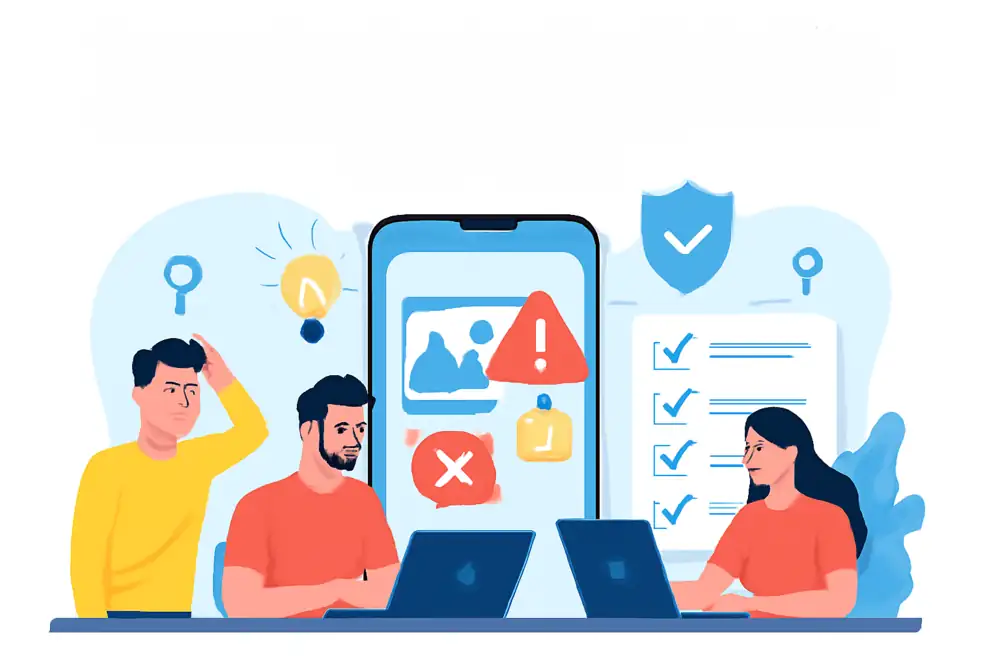Common Mistakes Startups Make When Building Their First App

Launching an app is a defining step for any startup. Unfortunately, many founders stumble into avoidable traps—wasting time, money, and credibility. Here’s a comprehensive, plagiarism-free breakdown of the most common mistakes made by first-time app builders, along with actionable tips for success. This post is optimized for the keywords: “mistakes startups make,” “first app development,” and “startup app pitfalls” to help drive relevant SEO traffic.
1. Skipping Market Research and Idea Validation
Mistake: Many startups are so confident in their idea that they rush into development without verifying real user demand. Skipping research leads to creating apps nobody wants or understands. Too many founders fall in love with the solution, not the problem.
What to Do:
- Interview potential users to understand their pain points.
- Analyze competitors: What are they doing well? Where do they fall short?
- Test your assumptions with surveys, social media polls, or no-code prototypes.
2. Overloading the First Version With Features
Mistake: Trying to launch with every feature imaginable is a recipe for confusion, delays, and budget overruns. First-time founders often want to “wow” users, but instead, it creates a cluttered experience.
What to Do:
- Focus on building a Minimum Viable Product (MVP): one core feature that solves the main problem.
- Release early, then iterate based on real user feedback.
3. Ignoring the User Experience (UX)
Mistake: Prioritizing technical brilliance while overlooking UX design results in frustrated users. Apps that are hard to navigate or unattractive will be quickly abandoned.
What to Do:
- Invest in UX/UI design from day one.
- Gather feedback early and adjust your design to real behaviors, not just opinions.
4. Neglecting Thorough Testing
Mistake: Launching without proper testing leads to bugs, crashes, and bad reviews. Rushing to market without fixing key issues can destroy trust—70% of startup failures are due to releasing buggy products.
What to Do:
- Set up systematic testing throughout development: unit, integration, and user acceptance tests.
- Include beta users from your target audience.
5. Failing to Plan for Scalability
Mistake: Designing your app just for today’s user base ignores future growth. Many apps fail when they “go viral” because their infrastructure can’t handle the traffic.
What to Do:
- Choose scalable cloud solutions.
- Write clean, modular code so new features and improvements can be added easily.
6. Building the Wrong Development Team
Mistake: Hiring developers without relevant experience or outsourcing without oversight can compromise quality, communication, and deadlines.
What to Do:
- Vet developers for both technical skill and industry experience.
- Ensure clear communication protocols and project management practices are in place.
7. Underestimating the Importance of App Updates and Maintenance
Mistake: Some founders think the job is done at launch. In reality, successful apps need constant refinement to fix bugs, address user feedback, and adapt to changing platforms.
What to Do:
- Budget for maintenance and updates.
- Monitor analytics, user reviews, and app performance routinely.
8. Forgetting Legal Steps and Compliance
Mistake: Ignoring data protection laws, neglecting to clear up intellectual property, or failing to get user consent can result in app takedowns or lawsuits.
What to Do:
- Ensure privacy policies and terms of service are in place.
- Consult legal experts for IP, GDPR, and compliance needs.

